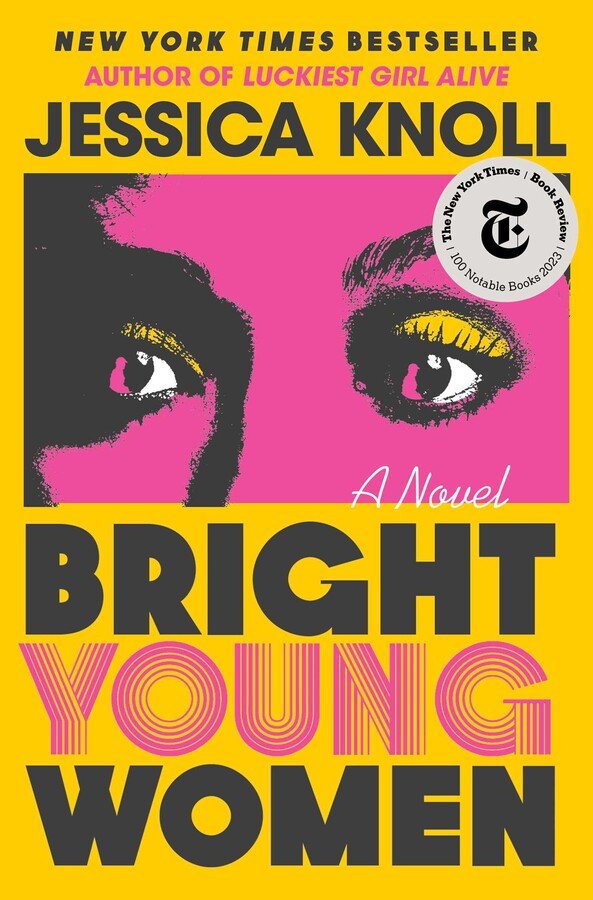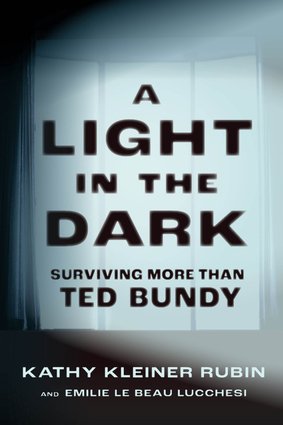“Bright Young Women” Review
I really wanted to love this book. Didn't get there.Disclaimer: I received a digital copy of this book through a Goodreads giveaway.
Also, psst…spoilers ahead
Great Concept - Where’s the Hollywood Deal?
Bright Young Women by Jessica Knoll is loosely based on Ted Bundy’s killing spree of young women across the United States and the absolute shitshow that followed him upon his arrest. Specifically, the murders at the center of the story are the Florida State sorority house murders where Bundy attacked four women, killing two, and then assaulting another down the street.
I thought this was a really great concept. The book wasn’t what I expected, which isn’t a bad thing at all! Ultimately, however, I thought it was like a pot boiling and starting to spill over; there’s something potentially good cooking, but there’s a mess to clean up first. The mess wasn’t cleaned up.
And I don’t think “mess” is the word to describe how I felt about the book. Rather, the book tries to do/be too much and loses itself in the process. But I’m not going to be surprised whenever it’s announced that it will be adapted into a movie or miniseries (it would probably be a really good miniseries) and that some of the things I didn’t like about the book end up not making it to the screen.
No-Named Defendant
Obviously, I knew this was based on Ted Bundy. But I thought it pulled a little too much from his story. While I think some aspects of Bundy’s character - “the Defendant” made sense in this story, I think there could’ve been a little more creativity. The story of the Defendant’s other victims - like the victim at a ski lodge with her doctor fiancee - are exactly the same as Bundy’s. Even the fact that it was also Florida State University felt weird. This obviously isn’t something major, but for whatever reason, it annoyed me. Maybe I should have expected it because it was based on the sorority house murders, but it felt a little too copy/paste to me. I also did find it a little uncomfortable because the survivors of the actual Chi Omega attack are still alive. And actually, while researching for this post, I learned one of those survivors - Kathy Kleiner Rubin - released a memoir in October - A Light in the Dark - which just moved to the top of my to-be-read list!
Probably my favorite thing about “Bright Young Woman” is how it approaches the Defendant. The Defendant is never given a name, and I love that. We hear time and time again that we should be saying the victims’ names and not that of their murderer, and this book is focused on the victims, not the bad guy. Just like Bundy, the Defendant has his share of groupies and somehow tricks people into not seeing him as a monster, but a charmer. A focus on the criminal/accused is a major issue in the true crime sphere currently (as if true crime didn’t have enough issues). Although the story is fictional, it does what so many true crime podcasts, documentaries, and whatever else fail to do - tell the victims’ stories.
Kind of.
The story is told from two different points of views - Pamela, president of the sorority attacked and who saw the Defendant’s face that night, and Ruth, an earlier murder victim of the Defendant’s. The two stories intertwine when Pamela meets Tina, who had been Ruth’s girlfriend and is (rightly) obsessed with seeing the Defendant brought to justice.
I understand why Knoll chose to tell the story from Pamela’s point of view and not from one of the sorority house victims. But this is also where the story gets a little haywire.
Sisterhood
I felt like the other victims in the sorority house case are forgotten, and there were two survivors from that attack. Other than a hospital visit - where one doesn’t realize there deaths in the attack - we really don’t hear from them again. Pamela doesn’t even mention them, and, although Denise was her best friend, I felt their exclusion took away from what Knoll was trying to accomplish.
If the story was meant to be about recapturing the victims’ voices in the wake of these horrific crimes, how do you not further look into those actual victims? Second, a huge theme of this story was sisterhood. Pamela was the sorority chapter president, a role she took very seriously.
Where the heck was she? There’s very little interaction with Pamela and her sisters. She talks about needing to be a leader, but, seemingly, instead of being there with her sisters trying to process and heal from what happened, we have her working to solve the crime. I get the why; that’s what moves the (already slow) plot. And I get that might not have been the most interesting story. But the victim’s don’t always have the thriller, high stakes adventure as a result of their crime and get their revenge. Picking up the pieces and healing is a fight of its own. People survived. What greater adventure is there?
Some more sisterhood interaction would’ve helped bolster that theme. Those victims were almost lost to the story.
Whiplash
Also, for a story that moved really slow, there were a lot of plot changes seemingly at the drop of a hat. The characters would be getting whiplash.
There are so many side plots.
I kept expecting a twist, I think, because of how copy/paste it seemed from the Bundy murders. The twist I was expecting here was that Tina would turn out to be Ruth’s killer. I’m not the only one who thought this, but that would’ve been wild for a book so focused on ensuring women’s voices are heard. It wouldn’t have had to take away from those themes either; because if Pamela had to turn Tina in, that would’ve taken some serious strength.
Both Pamela and Ruth had serious issues with their mothers. Ruth had a lesbian relationship with her best friend who is now her sister-in-law, and her brother doesn’t know the truth. Oh, and it turns out her dad was also gay, but Ruth outed him, then he had a heart attack. I have no idea why the side story of her dad’s sexuality existed. It did nothing but show hypocrisy in her family which really did nothing because Ruth and her family were awful characters anyways.
Pamela was once kidnapped on vacation, gone for four days, and because of this, her mother held her at arm’s length which led to a frosty relationship. Her dad wasn’t getting father of the year awards either. Trauma for trauma’s sake. Plus Denise’s boyfriend attacking her also didn’t add much.
The Carl story was a bummer. It was good to give Pamela an opportunity to really acknowledge that she wasn’t happy with her boyfriend, but Carl turning into a scumbag really didn’t do much. Attacking her at the nursing home was a red herring, too, and kind of a cheap one because I can guarantee almost everyone reading that thought it was going to be the Defendant or Roger.
These characters also have a helluva lot of audacity. Almost all of them. Drowning in audacity.
A lot of people loved this book, but it was frustrating for me. I think it was trying to do too many things and lost its focus in the process. I think I would’ve liked it more if it had been more loosely based on the Bundy murders. Those women, their injuries, and their survival are very, very real. It was hard for me to be in this fictionalized setting knowing the reality that built it. Ultimately, I feel like it is something you either love, or you don’t.
However, I do think it is important to note that while I didn’t love this book, I definitely wouldn’t be opposed to reading more of Jessica Knoll’s work.


